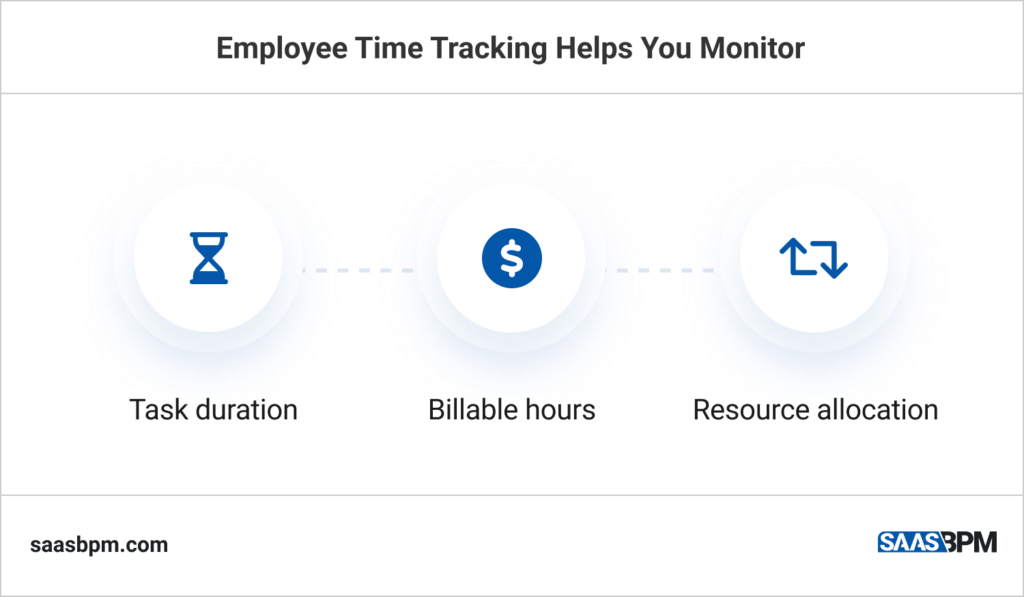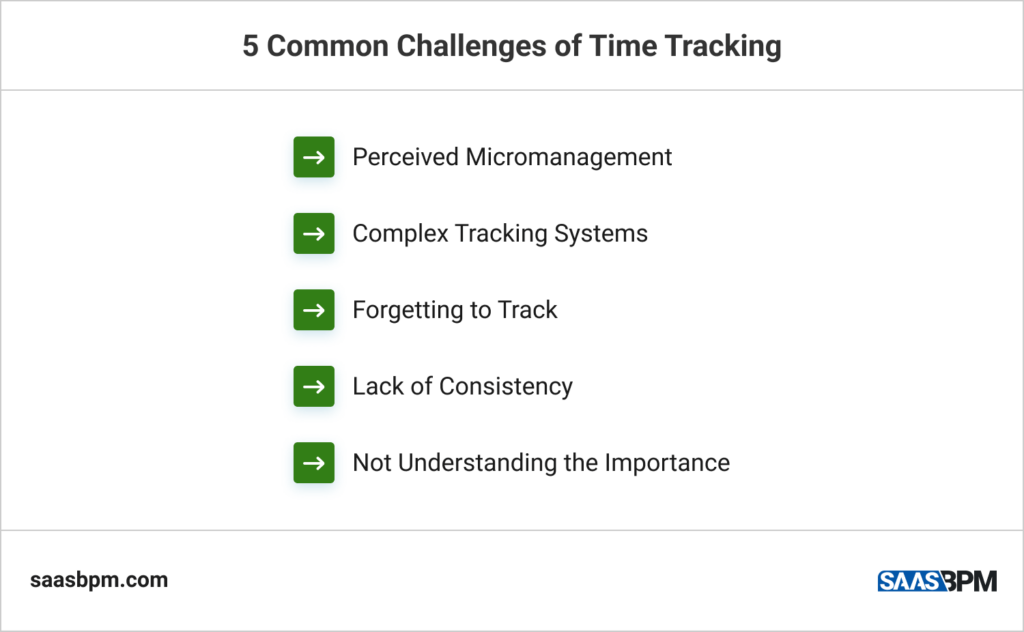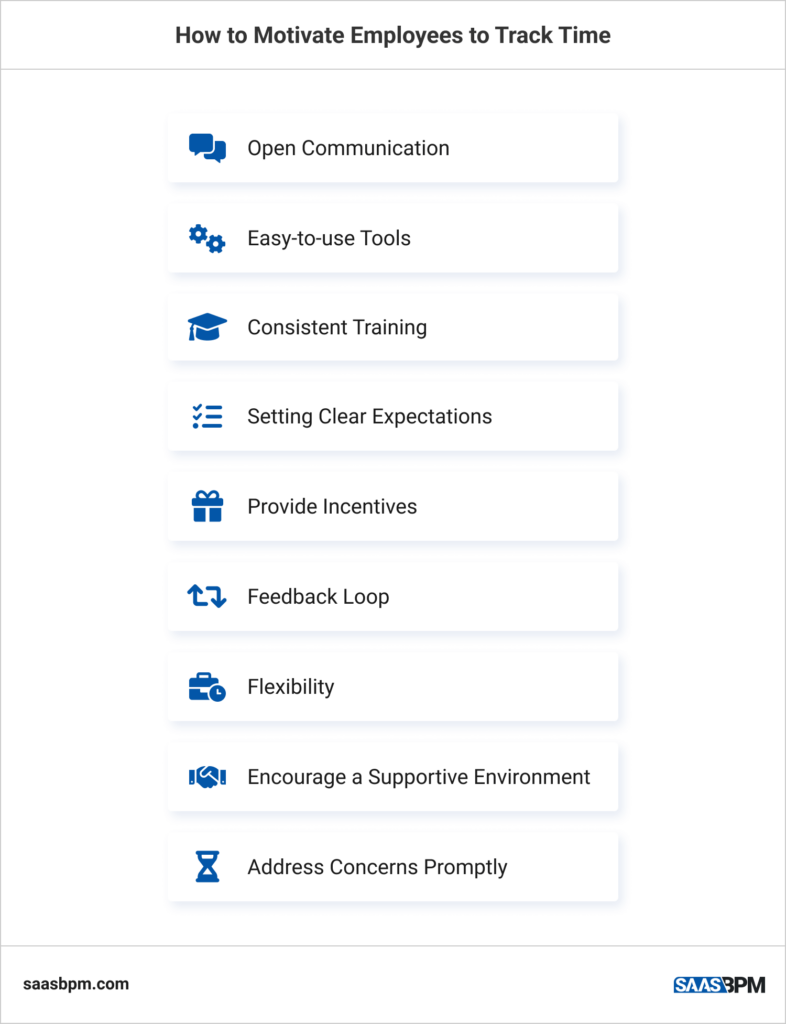Time is a non-renewable asset, making its effective management vital in the dynamic world of business. Each moment counts, especially when aiming to maximize efficiency, profitability, and output. Here’s where motivating your employees to track time at work becomes paramount. It offers a clear picture of how business hours are being utilized, revealing areas ripe for optimization.
However, despite its evident advantages, many teams resist the practice of diligent time tracking. This reluctance often stems from a range of factors – from concerns about micromanagement to the perceived tedium of the task or a sheer lack of understanding of its benefits. Leaders are tasked with addressing these reservations, ensuring teams recognize the true value of time tracking.
Incorporating a BPM software can significantly ease this transition. Not only does it streamline time tracking, but it also refines all business processes within an organization. By integrating such a tool, companies can effectively bridge the gap between the necessity to track time and the practicalities of doing so, ensuring both individual and organizational benefits.
In this article, we will explain the ins and outs of employee time tracking along with ways to motivate your team to do it regularly. Let’s go!
Why Is It Essential To Track Time At Work?

Time is a finite resource, and its optimal use can be the difference between success and mediocrity in a business setting. Accurate time tracking goes beyond the simplistic view of merely counting hours; it delves deep into the realms of productivity, operational efficiency, and understanding the nuances of team dynamics.
First and foremost, the aability to track time with precision paints a clear picture of the duration certain tasks or projects take. This invaluable data aids in crafting realistic project timelines, ensuring that future tasks or projects are both achievable in scope and realistic in deadlines. Proper time allocation and tracking can also prevent burnout by ensuring that employees aren’t consistently overburdened. It strikes a balance, promoting a culture where workload is evenly distributed.
From a financial perspective, precise time logs are indispensable. They ensure that clients are billed accurately for the services rendered, safeguarding the organization’s financial interests. Inconsistent or inaccurate billing can strain client relationships, so this accuracy further builds credibility and trust with stakeholders.
Additionally, time tracking serves as a diagnostic tool. It can spotlight areas where employees might be struggling, indicating where further training or resources might be beneficial. In the broader scope, accurate time tracking is not just a managerial tool, but a strategic asset that drives informed decision-making, effective resource deployment, and sound financial strategies.
5 Common Challenges of Time Tracking

Often, introducing a time-tracking system at work is met with a spectrum of challenges, from operational hiccups to perceptual barriers. Let’s delve into some of the most prevalent bottlenecks faced by organizations in the realm of time tracking.
Perceived Micromanagement
One of the primary challenges is the perception employees might develop around time tracking. For many, it can feel like an intrusive form of surveillance, a means for management to monitor their activities minute-by-minute. This perception can breed discomfort and resistance, with employees feeling their autonomy is under threat. They may worry that taking short breaks or occasionally diverting from a task might be held against them, even if these deviations are for legitimate or beneficial reasons.
Complex Tracking Systems
An ideal time tracking system should be user-friendly and intuitive. However, some businesses implement systems that are convoluted and cumbersome. When faced with intricate interfaces or a maze of functionalities, employees can become discouraged. A system that is supposed to enhance productivity can ironically end up consuming more of an employee’s time, leading to frustration and potential avoidance of the tool.
Forgetting to Track
In the midst of a hectic workday, with looming deadlines and a barrage of tasks, employees might occasionally forget to log their hours. Such inadvertent oversights can disrupt the accuracy of records and render the time tracking exercise ineffective.
Lack of Consistency
Without a standardized method or clear guidelines for time tracking, employees might adopt varied approaches. Some may choose to log their hours at the end of the day or week, relying on memory, leading to potential inaccuracies. Others might guesstimate their time spent on tasks. These inconsistencies not only affect the validity of the time records but also diminish the purpose of having a tracking system.
Not Understanding the Importance
For any system to be embraced, its value must be clearly communicated and understood. In the absence of clear communication, team members might fail to recognize the significance of time tracking. Instead of seeing it as a tool to enhance productivity, streamline operations, and provide valuable insights, it might be perceived as an administrative burden or unnecessary chore.
How to Motivate Employees to Track Time

For businesses to harness the full potential of time tracking, employee buy-in is crucial. However, motivating employees to adopt this habit consistently and accurately is not always straightforward. A blend of strategies can foster a more positive perception of time tracking and catalyze its consistent implementation.
1. Open Communication
Begin the journey by elucidating the rationale behind time tracking. Transparency is key. Explain to your team how tracking time is not about surveillance, but about understanding workflow, optimizing productivity, and ensuring fair compensation. When employees discern that the intent is not to micromanage but to enhance the work environment and project management, resistance may diminish.
2. Easy-to-use Tools
The adage ‘simplicity is the ultimate sophistication’ holds here. The more straightforward and user-friendly your time tracking tool, the more likely employees are to use it. Investing in intuitive software, perhaps with features like automatic reminders or mobile compatibility, can significantly streamline the tracking process, making it less of a chore.
3. Consistent Training
With the best tools in place, ensuring that every team member can navigate them effectively is essential. Organize regular training sessions, workshops, or demonstrations. This not only helps employees familiarize themselves with the tool but also provides a platform to address queries or concerns.
4. Setting Clear Expectations
A well-defined company policy regarding time tracking can eliminate ambiguities. Ensure that everyone, from interns to top-tier management, understands what’s expected in terms of time logging. Clarity can prevent oversights and instill a sense of collective responsibility.
5. Provide Incentives
Turn time tracking into an engaging challenge. Offering rewards or incentives for consistent and accurate time logging can be an effective motivational tactic. This could range from tangible rewards, like bonuses or gift cards, to recognition within the team or company.
6. Feedback Loop
One of the primary reasons employees might be resistant to time tracking is the feeling that it’s a futile exercise. By regularly sharing insights and outcomes derived from the tracked data, you can demystify its value. When an employee sees that their logged hours play a role in project estimations, resource allocation, or even in strategizing for better work-life balance, they’re more likely to be invested in the process.
7. Flexibility
While accuracy in time tracking is crucial, allowing a degree of flexibility can alleviate the pressure. Instead of insisting on logging every single minute, consider a system that rounds off time in 15 or 30-minute increments. This can make the process feel less tedious while still providing a reasonably accurate picture of time expenditure.
8. Encourage a Supportive Environment
Promote a culture where managers and team leaders set the example by consistently tracking their time. Their commitment can inspire others. Furthermore, encourage team discussions about the challenges and benefits of time tracking, fostering an environment of mutual support and shared goals.
9. Address Concerns Promptly
If employees voice concerns or challenges they face with time tracking, it’s essential to address these promptly. Whether it’s a technical glitch with the software or a feeling of being overwhelmed, providing timely solutions and reassurance can keep the momentum going.
What About Remote Team Members?

Remote work, a rapidly growing trend, presents unique challenges when it comes to time tracking. For employees, who work from home and often relish their autonomy and flexibility, the introduction of time tracking can sometimes be met with skepticism. It’s crucial to approach this segment with heightened sensitivity and clarity.
Start by emphasizing that time tracking isn’t a mechanism for surveillance but a tool designed to enhance productivity and work-life balance. It helps delineate professional responsibilities from personal time, preventing the blurring of boundaries that remote workers often grapple with. It’s not about monitoring their every move but ensuring they have a structured day and can clearly differentiate ‘work time’ from ‘personal time.’
Using digital tools specially tailored for remote teams can also make a significant difference. These tools, integrated with features like task management and real-time communication, can facilitate smoother tracking and improve team collaboration. Regular virtual check-ins and meetings can also provide remote workers with a platform to voice any concerns and get clarity on time tracking objectives. Remember, for remote teams, trust is paramount. It’s essential to underscore that the aim is always to support, not to micromanage.
Final Things To Remember
Enhancing the habit to track time at work is more about boosting productivity and understanding work dynamics, rather than acting as a watchful eye over employees. Its successful implementation can usher in transparency, efficiency, and pave the way for organizational growth. As you champion this initiative, it’s crucial to approach the task with understanding, always emphasizing the value it brings. Lead with empathy, maintain open channels of communication, and ensure clarity in your objectives to gain your team’s trust and cooperation.

